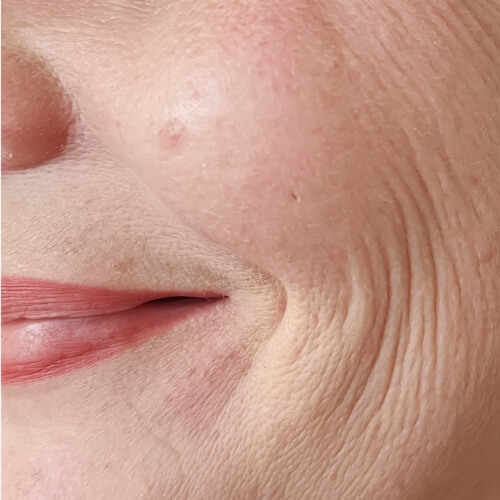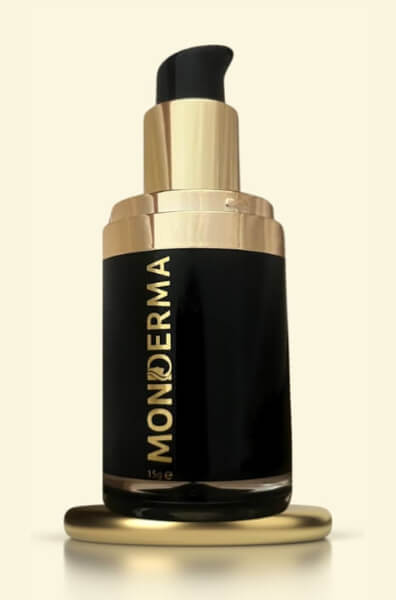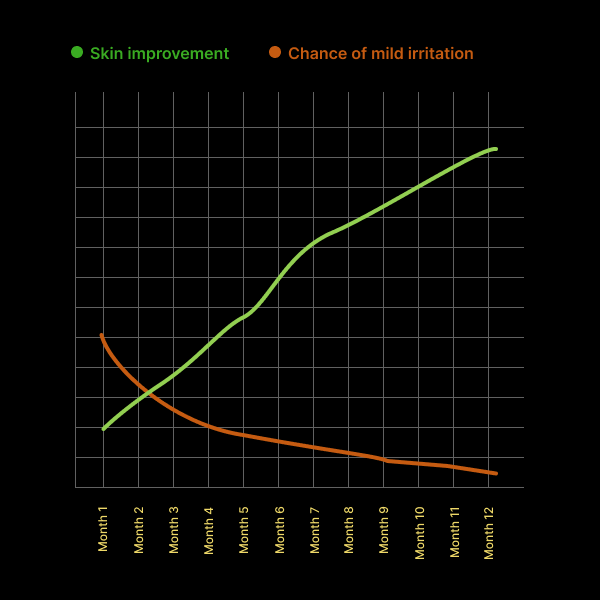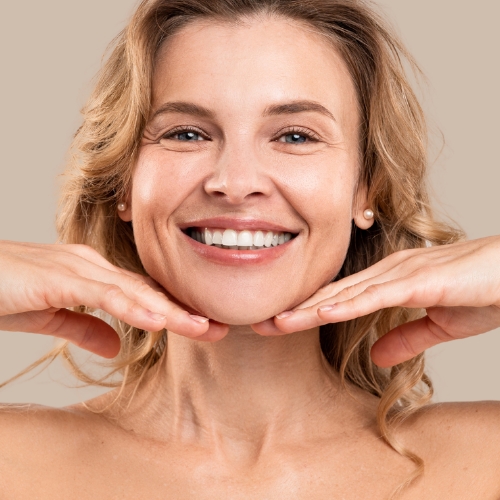
Noticing Midlife Changes?
The skin undergoes noticeable change between the ages of 35 and 55, typically leading to a dull, tired skin complexion.
Yet 80% of ageing is preventable. Smooth fine lines, reduce wrinkles, and fade age spots decisively with Monderma’s targeted ingredients, reinventing midlife skin.
Submit
Complete a short, free skin assessment
Start
Get your custom formula every 4 weeks
Support
Track progress, and cancel, restart anytime
What Is In Your Nightly Cream?
You will find 2-3 gold standard active ingredients, excipients, and a hyaluronic acid base cream sourced from MHRA suppliers in your age renewal formula.
Recyclable
Vegan Friendly
Cruelty Free
FRAGRANCE FREE
Alcohol Free
GPhC Regulated
MHRA Approved Suppliers
Dermatologist Tested
Pharmacist Led

The Monderma Difference
| Retail |  |
|---|---|
| Multiple products | All-in-one multitasker |
| Batch produced | Personalised |
| Over-the-counter | Pharmacist-led |
| Cosmetic ingredients | Active ingredients |
| Low strength | High strength |
| Rarely regulated | GPhC-regulated |
| Elementary checks | MHRA-suppliers |
| Typically imported | UK-compounded |
Transform Your Skin Today
Custom formulas are provided under the supervision of GPhC registered prescribers and pharmacists for safe, effective use.
As your treatment progresses, you will notice fewer fine lines and age spots. Mild side effects such as peeling, tingling, and redness may occur but typically ease as your skin adjusts.

Tried, Tested, Loved: Hear It Firsthand
For the price point I really recommend them. Personable and thumbs up from me
“It definitely works as I can feel my skin feeling firmer and tighter, and have had a few people say my skin looks glowing!”
– Anand, P, Middlesex, UK
I was expecting something this advanced to cost three times as much
“The fine wrinkles and sun damage are less noticeable, and my skin feels more youthful.”
– Julie, T, Ceredigion, UK

Revive your youthful glow with personalised skincare up to 20x the strength of over-the-counter anti-ageing products.
Still Have Questions?
Ageing is a multifaceted process that begins around the age of 25 and tends to accelerate in the 40's, and again in the 70's.
Women's skin intrinsically ages faster than men's, but men tend to be more affected extrinsically by lifestyle.
People with lighter skin tones tend to show wrinkles more visibly, whereas darker skin tones often maintain a smoother appearance for longer but experience more pigmentation changes.
The symptoms of ageing skin include fine lines and wrinkles, thinning and fragility, dullness, and dryness. The process of ageing can be seen throughout the body, with the most noticeable effects appearing on the face, which accounts for 50% of initial ageing, followed by the neck at 25%, hands at 15%, and knees at 10%.
Ageing skin is a dual mechanism:
| Subtype | Description | Common Areas |
|---|---|---|
| Intrinsic (chronological) | The normal course of ageing, which is closely linked to the natural biological clock and the passage of time. It occurs gradually over time, irrespective of external factors | Entire body, including less exposed areas like the torso, back, and buttocks |
| Extrinsic (photoageing) | The premature course of ageing by external factors that accelerate the intrinsic ageing process. It is preventable damage to the structural components of the skin and impedes its natural repair mechanisms | Exposed areas of the skin, notably the face, neck, arms, and legs |
Sun exposure alone attributes for up to 80% of extrinsic ageing.
While intrinsic ageing cannot be mitigated, it is becoming increasingly possible to reduce extrinsic ageing.
Ageing skin is caused by a loss of the skin's ability to regenerate collagen and elastin, two essential molecules that give it its strength and mobility.
Collagen is a protein that provides structure and elasticity to the skin. After the age of 20, production declines by about 1% per year.
Elastin fibres help the skin to return to its original shape after stretching. As elastin depletes, the skin can become more lax and less resilient.
The primary causes of intrinsic ageing are the following:
| Cause | Description |
|---|---|
| Genetics | Genetics can influence the rate at which the body ages by determining how cells replicate, repair, and respond to environmental stress. Mutations or variations in specific genes can cause faster cellular breakdown, resulting in premature signs of ageing, notably wrinkles |
| Cellular | Cellular replication is limited to about 50 cycles before the genetic material can no longer be accurately copied. As senescent cells accumulate and damage worsens, the skin thins, loses its elasticity, and becomes more fragile |
| Hormones | Hormones, particularly oestrogen and testosterone, decline with age, reducing skin elasticity and moisture. This hormonal shift contributes to visible signs of ageing, such as wrinkles and dryness |
The extrinsic factors that accelerate ageing include:
| Contributor | Description |
|---|---|
| Photoageing | Photoageing, caused by UV (ultraviolet) radiation, particularly between 11am and 3pm, as well as the use of tanning beds, causes thousands of DNA alterations in each cell of the skin every day. This accelerates the breakdown of collagen and elastin fibres, leading to wrinkles, rough skin texture, and age spots and patches |
| Nutrition | Nutrition, including diets high in sugar and processed foods, can cause glycation, where sugar molecules bond with proteins like collagen, reducing their flexibility. Antioxidant-rich foods, such as fruits and vegetables, can help to combat oxidative stress. Lack of hydration can harm the skin's health and appearance, increasing the risk of premature wrinkles and thinning |
| Medications | Medications, such as immunosuppressive agents, along with immune deficiency diseases and the psychological stress they treat, can accelerate cellular damage and reduced skin resilience |
| Smoking | Smoking, particularly due to nicotine, narrows blood vessels and reduces blood flow, limiting the amount of oxygen and nutrients that reach skin cells. This leads to a sallow complexion and accelerates skin ageing |
| Alcohol | Alcohol, when consumed excessively, dehydrates and damages the skin, diminishing its natural glow. This results in dryness, wrinkles, and a dull complexion over time |
| Skincare | Skincare becomes increasingly important as the natural exfoliation process slows with age. Not cleansing properly can cause a buildup of dead skin cells, oil, and dirt, resulting in a dull complexion |
| Environment | Pollution, such as particulate matter and smoke, can clog pores, cause inflammation, and leave the skin looking dull. Harsh working conditions and chronic stress can have an adverse effect on hormonal levels and skin health |
Understanding these extrinsic factors, particularly sun exposure, is key to manage and mitigate premature ageing and a tired, lacklustre appearance.
A doctor, pharmacist, or nurse can determine the extent of premature ageing. This involves examining exposed areas of the skin to assess its underlying causes.
The normal course of ageing includes:
| Age | Symptoms | Description |
|---|---|---|
| 25-30 | Fine lines on the forehead and around the eyes | The skin begins to thin, reducing its barrier function and natural UV protection. Collagen mass and flexibility start depleting at a rate of about 1% per year |
| 30's | Fine lines on the cheeks, around the mouth, and on the neck, as well as mild hyperpigmentation | The skin's barrier function weakens, and cell metabolism slows. As hyaluronic acid production declines, skin moisture loss increases. Collagen continues to deplete at 1% per year, and the first effects of sun damage appear that occurred during the teenage years and 20's |
| 40's | Moderate wrinkles on the forehead, around the eyes, cheeks, mouth, and neck, increased dullness and dryness, and less volume in the cheeks and neck | The skin’s outer layers no longer lie in their proper order, resulting in a more pronounced dull appearance. Existing skin cells shrink, and fewer new cells are formed, leading to reduced skin volume |
| 50's | Thinner and less elastic skin and moderate hyperpigmentation | Connective tissues in the skin’s middle layer lose their fibrous structure and ability to retain water. Fat tissue in the lower layer thins |
| 60's | Deep wrinkles throughout the face, increased sagging, and significant dryness | The skin’s natural lipid production declines, as does the production of collagen and hyaluronic acid, resulting in deeper wrinkles and slower skin regeneration. The skin becomes more fragile and prone to dryness |
| Over 70 | Impaired wound healing and severe hyperpigmentation | The skin’s immune function weakens significantly, making it more vulnerable to infection. Wound healing slows, and hyperpigmentation becomes more severe due to prolonged exposure to environmental factors |
While ageing skin itself is a cosmetic concern, it can be a symptom of an underlying health issue that requires attention, such as nutritional deficiency or hormonal imbalance.
If the skin has not responded to over-the-counter products or is at risk of complications, Monderma may recommend a treatment plan.
This may contain up to 3 of the following ingredients:
| Topical | Properties |
|---|---|
| Retinoids | Regulate the growth of cells on the skin to improve its texture and tone |
| Lightening Agents | Reduce the production of melanin to lighten patches of darker skin |
| Anti-Inflammatories | Inhibit the production of inflammatory-causing molecules to reduce redness and irritation |
| Antioxidants | Eliminate free radicals by repairing and strengthening the barrier function of the skin, improving hydration |
Treating ageing skin topically must include adopting daily use of broad-spectrum sunscreen of SPF30 or higher.
It can take 8 weeks or longer to see lasting results, so it is important to be patient and follow your treatment plan. Information on these ingredients, their directions for use, safety information, storage, potential side effects, and reporting can be found in the information leafletAs the skin ages, cumulative damage from both intrinsic and extrinsic factors means it undergoes a series of changes that affect its appearance, texture, and function.
These visible changes include:
| Complication | Description |
|---|---|
| Fine Lines & Wrinkles | Dynamic wrinkles, such as frown lines, crow's feet, and laugh lines, are most noticeable when the muscles beneath them are active due to repeated facial movements. Static wrinkles, like forehead lines, cheek wrinkles, and marionette lines, are present even when the face is at rest. Gravitational wrinkles, typically jowls and neck wrinkles, appear in areas where the skin begins to sag as it loses elasticity with age. Atrophic wrinkles are fine lines that occur as a result of a decrease in the thickness and elasticity of the skin. Compression wrinkles, for example sleep lines, form due to external pressure on the face |
| Thinning & Fragility | Thinning skin becomes more fragile and vulnerable to injury, as both the middle (dermis) and outer (epidermis) layers lose their protective cushioning. This increases the likelihood of wounds, tears, and bruising, with slower healing due to impaired cell regeneration and a weakened vascular network, raising the risk of infection. Additionally, the loss of fat tissue beneath the skin leads to a noticeable reduction in volume, creating a hollowed appearance, particularly around the temples and cheeks |
| Dullness | Dull skin is usually the first symptom of ageing, as the skin's ability to shed dead cells and regenerate new ones slows down, leading to a buildup of dead cells on the surface and a lacklustre complexion. Reduced blood flow to the skin limits the delivery of oxygen and nutrients, further diminishing its natural vibrancy. Without the ability to reflect light effectively, ageing skin often appears matte and flat, making pores and pigmentation more noticeable |
| Dryness | Dry skin is common with ageing because the skin's ability to retain moisture and produce natural oils declines. As the skin ages, the sebaceous glands, which produce oil, become less active, resulting in a reduction in the protective lipid barrier that keeps the skin hydrated. Furthermore, the skin's natural ability to retain water decreases as hyaluronic acid production slows, resulting in moisture loss from the skin's deeper layers. This results in a rough, flaky texture that can be itchy and irritating |
| Hyperpigmentation | Hyperpigmentation in ageing skin is often driven by slower cell turnover, hormonal changes, inflammation, and cumulative sun damage. As the skin’s ability to renew itself declines with age, dark spots and uneven pigmentation become more prominent |
| Rosacea | Rosacea becomes more likely as the skin ages, with blood vessels becoming more visible near the surface, making them more susceptible to dilation and damage. Additionally, the skin’s diminished ability to repair itself and control inflammation increases the risk of developing rosacea or exacerbating redness and sensitivity |
| Psychosocial | Psychosocial factors related to early physical changes in appearance and societal attitudes associated with ageing can have an impact on self-esteem, particularly in the 30's and 40's |
Understanding and managing these complications is important for maintaining healthier, more resilient skin and promoting overall wellbeing as one ages.




